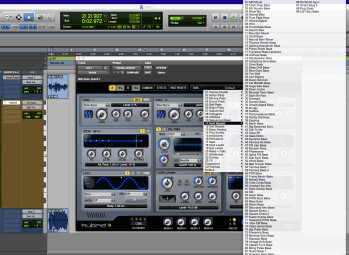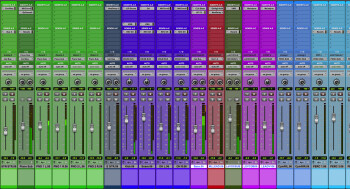A cohesive sonic signature helps make an album, EP or other multi-song project more appealing to listeners. If you listen to a classic album, whether it's Pink Floyd’s “Dark Side of the Moon,” The Beatles' “Abbey Road,” Nirvana's "Nevermind," or countless others, you'll notice a sonic consistency throughout each one. You might think sonic cohesiveness comes mainly from the mastering process, but a lot of it can be accomplished during the tracking and mixing phase of the production.
Pre-production

If you’re recording a band project, chances are you’ve already perfected your arrangements from playing live, and your instrumentation is probably set, as well. But if you’re doing a project where those aspects are being worked out as you go, “consistency” is the word to keep in mind.
For example, you might want to limit the instrumental palette to certain degree, especially if you’re working with virtual instruments, where you have infinite sounds available, and it’s easy to make one song very different from another in terms of instrumentation. For example, you might want to stick to one or two sampled drum kits for all your drum parts, rather than using a large variety. Or it might be better not to switch between a synth bass on some songs and an electric bass on others, but to choose one or the other.
Keep cohesiveness in mind when you’re choosing your sonic palette. Of course, a lot depends on the project, and you’re walking a fine line because too much sameness could make it boring.
Track for consistency
Now, let’s move to the tracking phase of your project. Again, the key is going into it with the intention of creating a consistent sound for the project. If possible, record all your basic tracks in the same place, and do likewise with vocals, guitars, and basses (although the overdubs don’t have to be recorded at the same studio where you did the basics). If you have drums throughout the album, use the same drum-mics and miking scheme for the whole project. When overdubbing vocals and other instruments, use consistent mic choices and mic placement from song to song.
A lot of this will happen naturally, because, especially in a home-studio situation, there frequently aren’t that many choices in terms of where to track and what gear to use. Still, if you keep it in mind throughout the tracking phase, you can make your “sound” more noticeable.
Mixing and matching

Mixing also provides you with avenues for making your sound more cohesive. Think about what kind of mood you (or the artist, if you’re just involved as a mixer) are trying to establish. Is it a powerful sound, an ethereal one, a dark brooding one or a bright happy one? What can you do when mixing to accentuate that?
It’s also helpful to maintain a consistent workflow from song to song. Doing your various mix tasks in the same order, and using the same (or similar) subgroup and routing schemes for all the songs, should help make your mixes more homogenous. After you mix your first song, you could even create a template in your DAW, or save individual channel strips, so that you can start with the same processing and effects settings for subsequent songs.
To give you an example, I just completed mixing a 16-song album for a client. Although it had the same lead singer throughout, it had different and diverse instrumentation from song to song. One of the ways I was able to keep some sonic consistency was by approaching the mixes similarly in terms of workflow. I tried to do things in a similar order, and with similar techniques. I think it really helped.
The singer in this project liked to double all his lead vocals and have them mixed slightly off center on either side. Not only did it strengthen his voice, but that vocal sound was a unifying element across all the songs. I’m not suggesting that you do that specifically, but am bringing it up as an example of how repeating a particular mixing technique from song to song can help give your project an identity.
As you go along in the project, compare your mixes constantly to keep things are sounding cohesive.
A consistent approach to how you setup the soundscape will also help. If you’re going for an LCR (left center right) panning approach, stick to it as much as you can throughout. Or if many of the songs have doubled rhythm guitars, it might make sense to pan them all hard left and right or 3 and 9 o’clock, or wherever as long as its consistent from song to song.
Putting in some signature mix touches can help apply the glue you need across the project. For instance, you could stick with only one reverb type (perhaps a plate) on the vocals. Or you could mix the drum kit with less reverb and room-mic sound than you might normally, to go for a super dry vibe.
The bottom line is that if you give your album an indentifiable sound, it will add to the cohesion and make your project more original.
